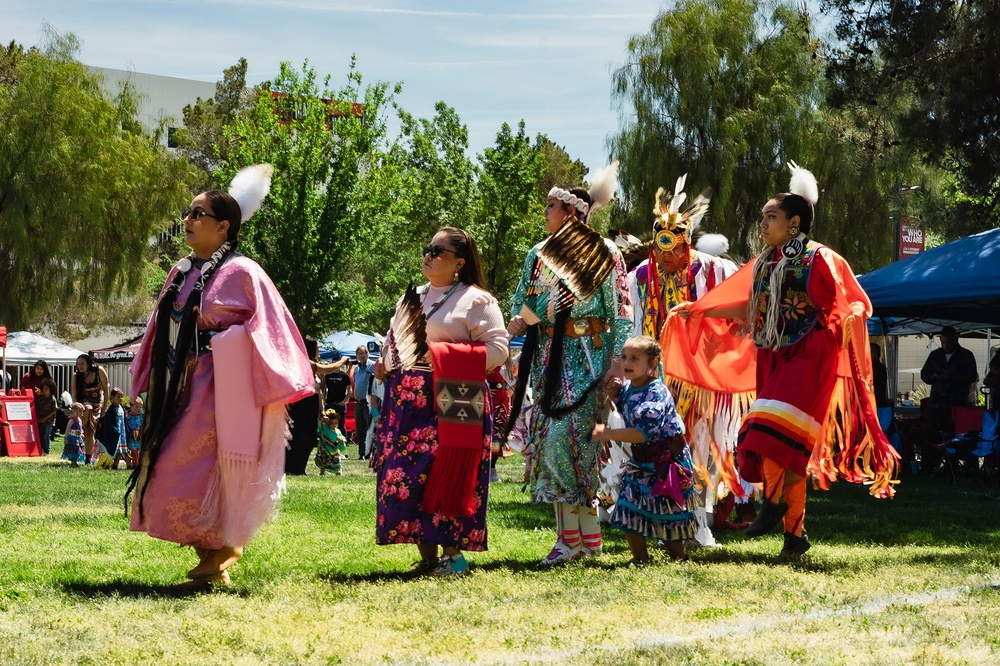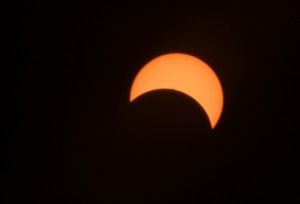For the first time in U.S. history, a tribe is managing land with the National Park Service. In March, the Yurok Tribe of California signed a historic memorandum of understanding with the National Park Service and California State Parks, thereby returning 125 acres of Yurok ancestral territory to the tribe, to be co-managed with the National Park Service.
The land, called ‘O Rew in the Yurok language, was stolen by settlers in the gold rush of the mid-1800s and now serves as a gateway to Redwood National and State Parks in Northern California, according to The Guardian.
To Tammi Tiger, co-founder and treasurer of UNLV’s Native American Alumni Club and director of the San Manuel Band of Mission Indians Tribal Education Initiative, such an arrangement marks a small step toward “reconciliation” for the U.S. government and its historic treatment of Native Americans.
“There’s the phrase ‘land back.’ We feel like the best reconciliation is returning the land to the tribe or the tribes that are part of that area [and] also have governance in place to co-manage with the U.S. government and have it protected under that national [monument] designation,” Tiger says.
She points to Avi Kwa Ame National Monument in Nevada as an example of a tribe and the federal government sharing the responsibility for land stewardship. The 500,000-acre area northwest of Laughlin surrounding Spirit Mountain is considered sacred to Yuman tribes. According to President Biden’s March 2023 proclamation establishing the national monument, the Secretary of the Interior is required to “meaningfully engage the Tribal Nations with historical and spiritual connections to the monument lands in the development of the management plan and management of the monument.”
Local Native Americans rallied around the designation of the Avi Kwa Ame National Monument at the first Powwow for the Planet in 2022. At this year’s powwow, April 19-20 at UNLV, they’re raising awareness about three sacred sites in Nevada—the proposed East Las Vegas National Monument, the Ruby Mountains in northeastern Nevada, and Bahsahwahbee, also known as Swamp Cedars, near Great Basin National Park.
Free and open to the public, the social powwow is not only an opportunity for Native Americans to convene and connect with their culture, but also for the wider community to learn about Native Americans’ issues.
“We can really talk about these issues and learn more about them, so that we can inform others—not even just the Native community, but the community within UNLV [and] within Las Vegas,” says UNLV junior and Native American Student Association president Elena Marcos.
It’s important for the continuation of traditions as well as survival, says Shelly Herrera-White, a Powwow for the Planet organizer and Native American Alumni Club member.
“It’s our obligation today to make sure the next seven generations have what they need to survive. Land protection is a huge part of that,” Herrera-White says. “We look at, politically, what initiatives different tribes are asking for. And it’s a great opportunity for us to bring awareness to that, move beyond a land acknowledgment and actually let people know they can support these initiatives by contacting political leaders in Congress to get these acts passed.”
There already is legislation in the works to protect the Ruby Mountains. In May 2023, the Ruby Mountains Protection Act, introduced by Sen. Catherine Cortez Masto (D-NV) passed out of the Senate Committee on Energy and Natural Resources. If passed by Congress, the legislation would withdraw approximately 450,000 acres of National Forest System land from any eligibility for oil and gas leasing. It now awaits a vote on the Senate floor.
“I grew up hiking in the Ruby Mountains. That’s how we traveled, hunted, fished. There are beautiful lakes up there,” says Herrera-White, a member of the Te-Moak Tribe of the Western Shoshone. “We’re just trying to protect it from fracking and all the studies being done in Northern Nevada to find natural resources. We don’t want them to … find something and then it be Thacker Pass all over.”
In 2023, Powwow for the Planet organizers advocated for the protection of Peehee Mu’huh, also known as Thacker Pass, as the Reno-Sparks Indian Colony, Burns Paiute Tribe and Summit Lake Paiute Tribe sued the Bureau of Land Management (BLM) in attempt to stop a lithium mine from moving forward on the land. Despite their efforts, judges sided with the BLM, and the developer has begun construction of a lithium mine on a sacred site where U.S. soldiers massacred the tribes’ ancestors in 1865.
Herrera-White adds that “clean energy” projects like utility-scale solar and wind power and electric vehicles (which use lithium batteries) can actually present a threat to some of the sacred places that Nevada tribes want to protect. “It’s ‘clean energy,’ but it’s not what they make it out to seem. You don’t hear about mining and the destruction that occurs to get that lithium,” Herrera-White says.
Tiger adds that more than 80% of Nevada’s land is federally managed, leaving the land open to energy developments.
“As more opportunities for development happen in Nevada … there’s just a need to help support the tribes in their stewardship and protection of these places that they hold sacred so that they don’t get caught up in those development activities,” Tiger says.
The 40-square mile Bahsahwahbee area was threatened in the early 2000s when the Southern Nevada Water Authority pushed to build a pipeline that scientists said would have drained the water table that feeds the “swamp cedars,” or Rocky Mountain junipers, that are sacred to Great Basin tribes.
“The Natives believe [the trees] are growing from our ancestors, out of the spirit of our ancestors, or the graves of our ancestors. So, they definitely want it protected,” says Herrera-White.
Ultimately, in 2020, a district court judge ruled that the state’s water law did not support the project, and the water authority shelved it indefinitely.
In a statement to the Weekly, Cortez Masto said she is working on legislation to create the Bahsahwahbee National Monument. The senator is also pushing the Biden administration to designate the site as a national monument through executive order.
“I’m continuing to work with tribes in Nevada and the administration to create the Bahsahwahbee National Monument. This is about protecting this sacred site and honoring the memory of their ancestors who were killed during three separate massacres,” she said in a statement.
Of the three sites that Powwow for the Planet is advocating for, the proposed East Las Vegas National Monument is the newest campaign. In 2021, state and county lawmakers passed resolutions to protect the 32,000-acre area, which includes Sunrise Mountain, Frenchman Mountain and Rainbow Gardens.
“One of the places under that proposed monument is Gypsum Cave, which is sacred to the Southern Paiute people,” Tiger says.
Marcos adds that the area is not only culturally significant, but “It’s important from an ecological perspective as well,” she says.
“There’s actually a population of Bearpoppies and those are an endangered species. They only grow in gypsum-rich soils. And as gypsum has been mined and the destruction of their habitat, they’re now vulnerable to extinction.”
Herrera-White says it’s important to listen to Native American perspectives in land stewardship, since they’ve observed the land for generations and have traditional knowledge of how to take care of it.
“People are up in arms if a developer tries to develop on a graveyard,” she says. “It’s no different. It’s sacred land.”
POWWOW FOR THE PLANET April 19-20, times vary, free. UNLV Chem Lawn, unlv.edu/event/2024-powwow-planet.
Click HERE to subscribe for free to the Weekly Fix, the digital edition of Las Vegas Weekly! Stay up to date with the latest on Las Vegas concerts, shows, restaurants, bars and more, sent directly to your inbox!




